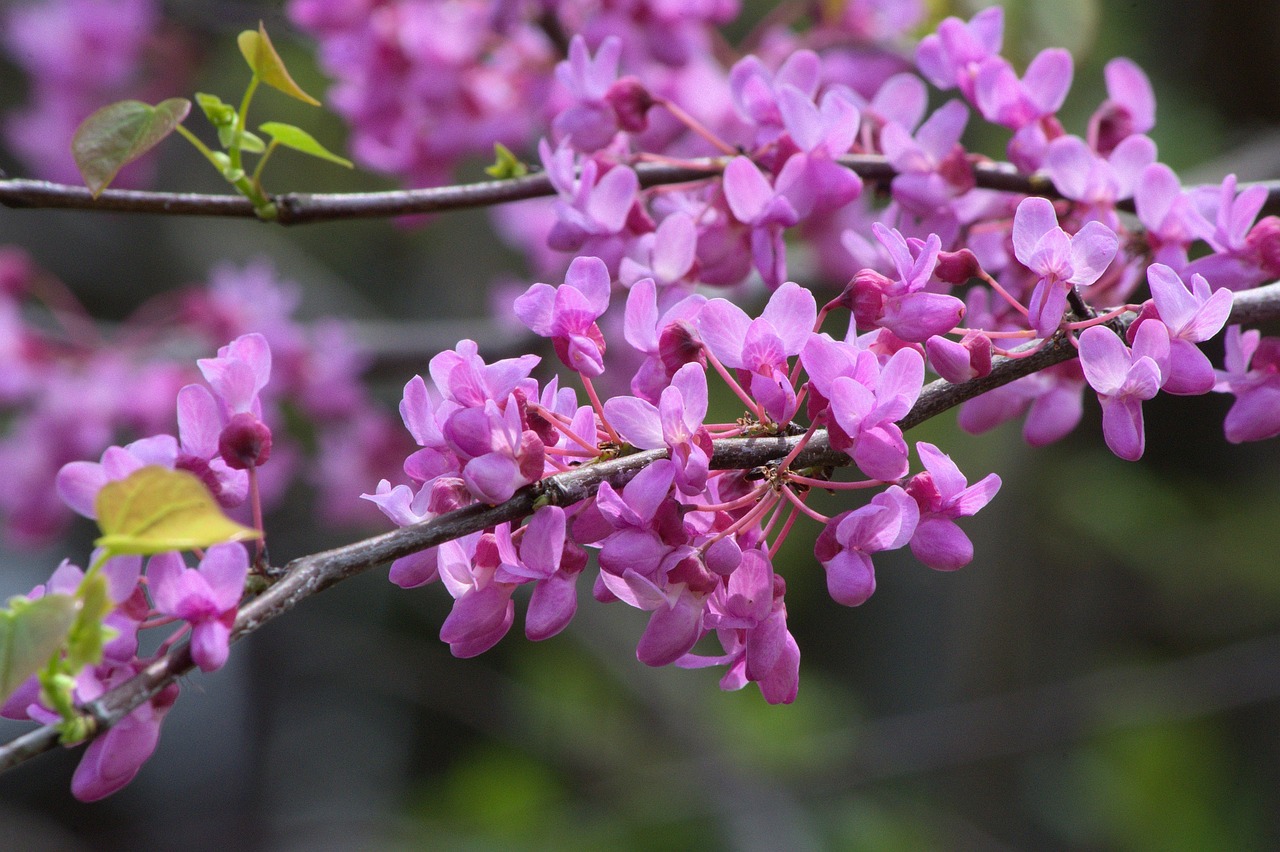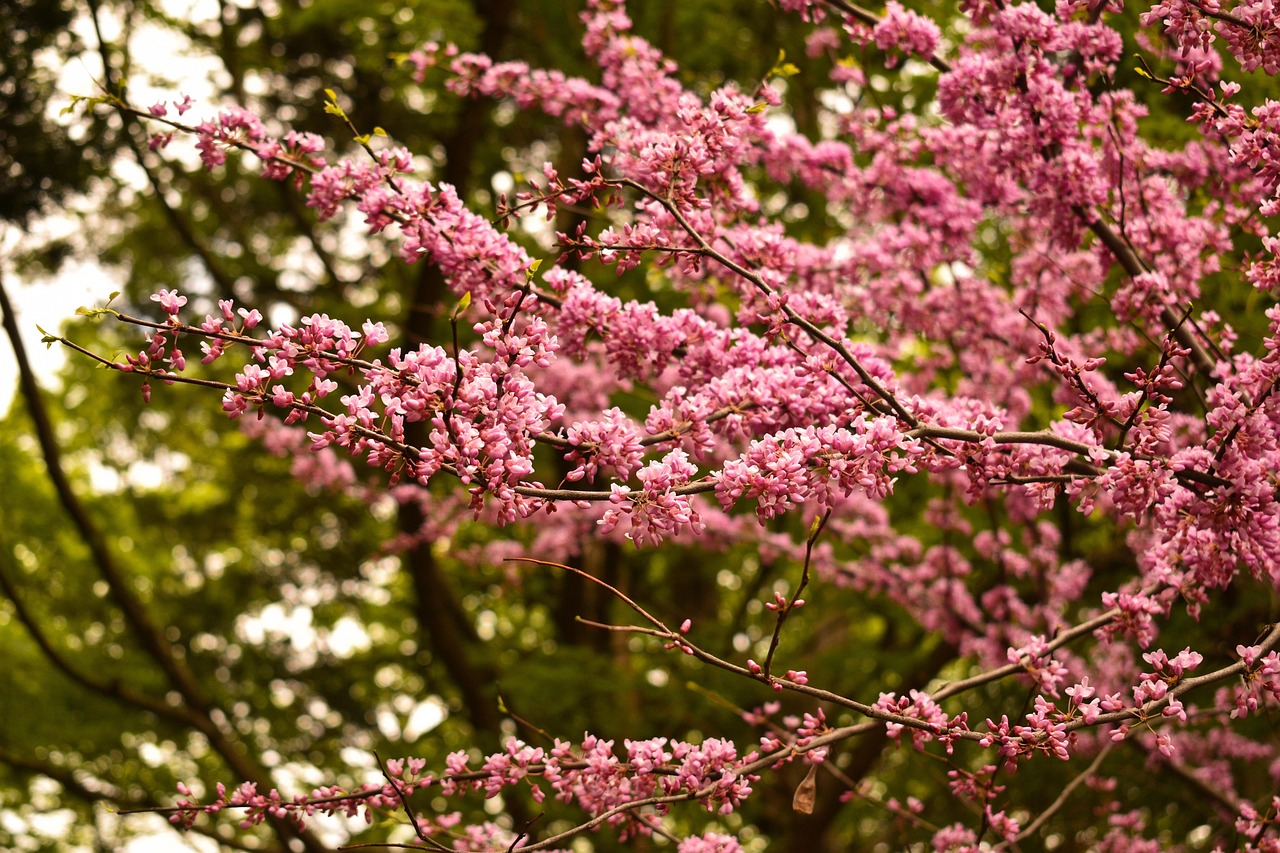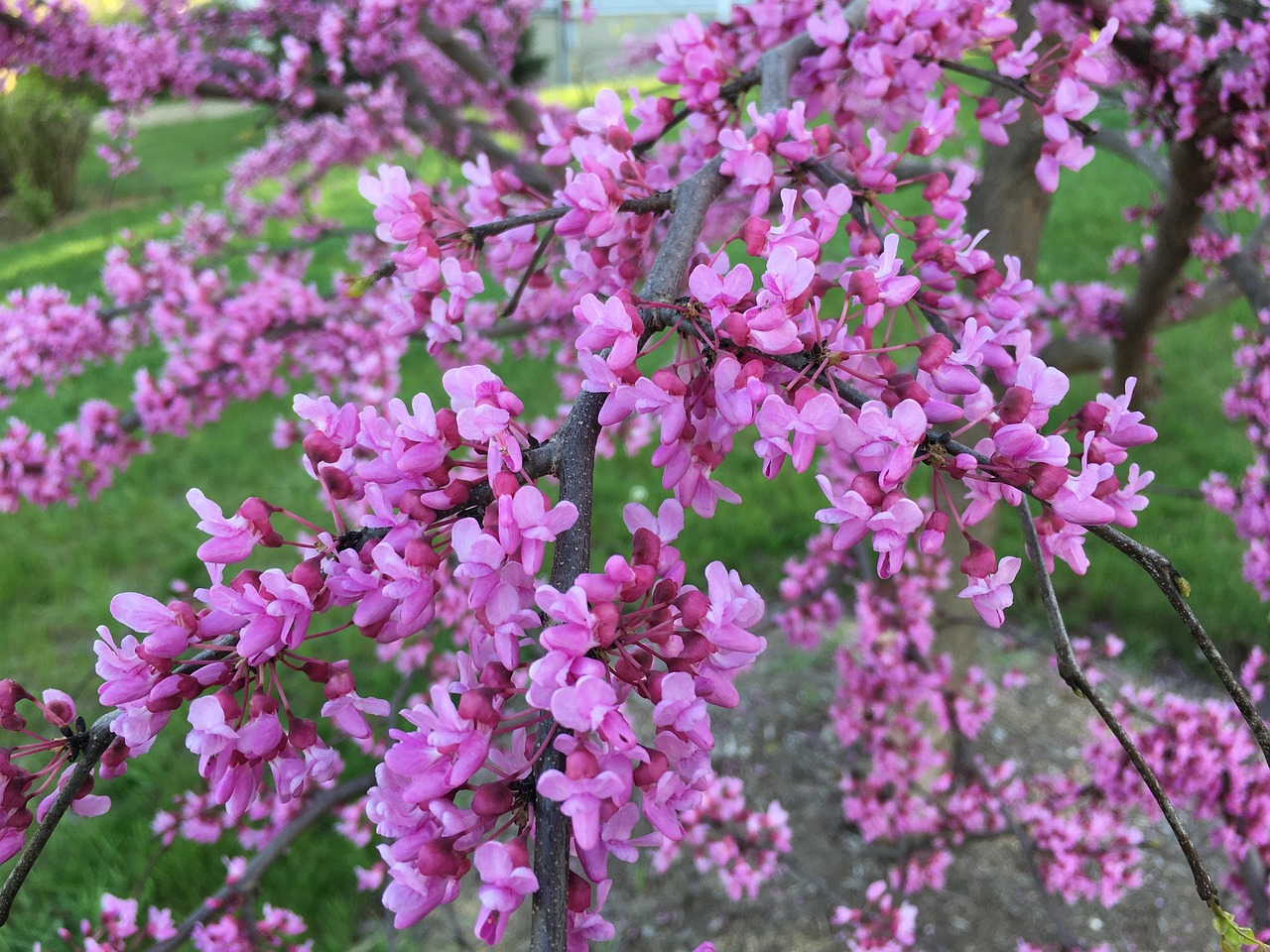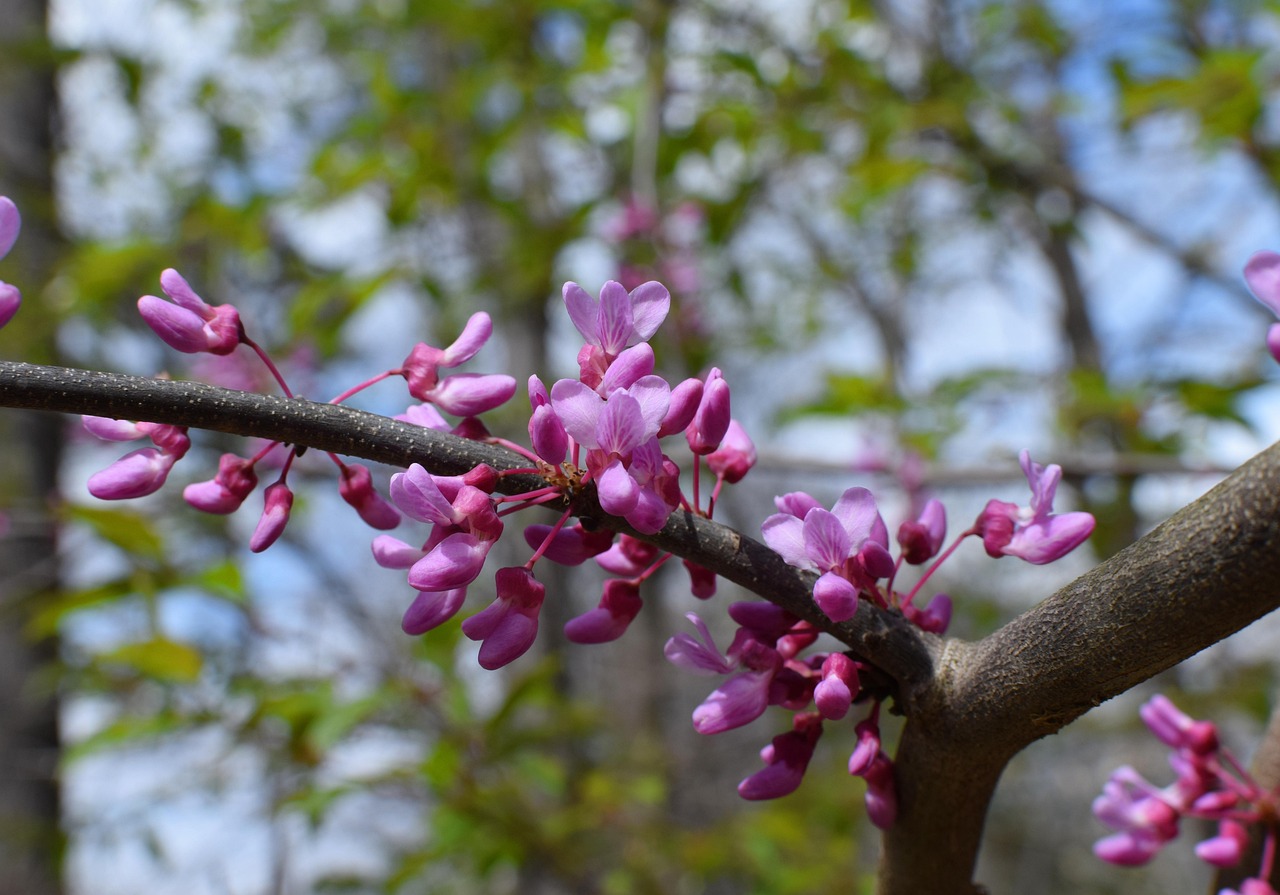The Eastern Redbud is a striking tree that captivates garden enthusiasts and nature lovers alike. Its vibrant blossoms and heart-shaped leaves make it a standout choice for any landscape. This article delves into the many reasons why this stunning tree deserves a prominent place in your garden.
The Eastern Redbud (Cercis canadensis) is native to North America, particularly found in the eastern United States. This deciduous tree is renowned for its breathtaking display of pink to purple flowers that appear in early spring before the leaves unfold. The flowers not only provide a visual treat but also attract pollinators such as bees and butterflies, enhancing biodiversity in your garden.

In addition to its beautiful blooms, the Eastern Redbud features unique heart-shaped leaves that emerge in a rich green hue. As summer progresses, these leaves can turn a lovely yellow in the fall, adding seasonal interest to your landscape. The tree typically grows to a height of 20 to 30 feet, making it an ideal choice for smaller gardens where space is limited.
Key Features of the Eastern Redbud
The Eastern Redbud has several notable characteristics that make it a favorite among gardeners and landscapers. Here are some of the key features:
- Flowering Time: Blooms in early spring.
- Height: Grows between 20 to 30 feet tall.
- Spread: Can reach a width of 25 to 35 feet.
- Hardiness Zones: Thrives in USDA zones 4 to 9.
- Soil Preference: Prefers well-drained soil but is adaptable to various soil types.
The adaptability of the Eastern Redbud is one of its greatest assets. It can flourish in various soil conditions, from sandy loam to clay. However, it prefers well-drained soil for optimal growth. This tree also tolerates both full sun and partial shade, allowing for versatile planting options in your garden design.
Moreover, the Eastern Redbud offers excellent ecological benefits. Its flowers provide essential food for early spring pollinators, while its foliage serves as habitat for birds and other wildlife. By planting this tree, you contribute positively to your local ecosystem, promoting a healthier environment.
Another reason to consider adding an Eastern Redbud to your yard is its low maintenance requirements. Once established, this tree is relatively pest-resistant and drought-tolerant. Regular watering during the first few years will help it thrive, but established trees can withstand periods of dryness. This resilience makes it an excellent choice for busy homeowners or those new to gardening.
Common Varieties of Eastern Redbud
There are several popular cultivars of the Eastern Redbud that offer unique features and aesthetics. Here are a few noteworthy varieties:
| Cultivar | Description |
|---|---|
| ‘Forest Pansy’ | Features deep purple leaves that turn green in summer. |
| ‘Hearts of Gold’ | Displays golden-yellow leaves in spring that transition to green. |
| ‘Ruby Falls’ | A weeping variety with cascading branches and purple foliage. |
Each cultivar presents distinct visual appeal and can serve different landscaping purposes, from accent trees to focal points in garden designs. Choosing the right variety depends on your aesthetic goals and specific garden conditions.
The Eastern Redbud is not just a beautiful addition; it embodies resilience and ecological value. Its ability to adapt to various conditions makes it a must-have for any garden enthusiast looking to enhance their outdoor space.
Planting and Caring for the Eastern Redbud

Successfully growing an Eastern Redbud requires understanding its specific needs regarding planting and care. This tree is relatively easy to maintain, but providing the right conditions will ensure that it thrives and looks its best throughout the seasons.
Ideal Planting Conditions
When selecting a location for your Eastern Redbud, consider the following factors:
- Sunlight: The Eastern Redbud prefers full sun to partial shade. Ideally, it should receive at least 4 to 6 hours of direct sunlight daily for optimal flowering.
- Soil Type: Well-drained soil is crucial. While it can tolerate various soil types, heavy clay soils should be amended with organic matter to improve drainage.
- Spacing: Allow enough space for the tree to grow. Planting it at least 15 feet away from buildings, other trees, or large shrubs will help avoid root competition and promote healthy growth.
Planting Steps
Follow these steps for planting your Eastern Redbud:
- Select a site that meets the sunlight and soil requirements.
- Dig a hole that is twice as wide as the root ball and slightly shallower than its height.
- Carefully remove the tree from its container, loosening any tightly bound roots.
- Place the tree in the center of the hole, ensuring that the top of the root ball is level with the surrounding soil.
- Backfill the hole with soil, lightly tamping down to remove air pockets.
- Water thoroughly after planting to help settle the soil around the roots.
Watering and Fertilization

Watering is essential during the first few years as the tree establishes itself. Here are some tips:
- Water deeply once a week during dry spells. This encourages deep root growth.
- Avoid overwatering, as this can lead to root rot. Ensure that the soil dries slightly between watering sessions.
- Once established, the Eastern Redbud can tolerate moderate drought conditions.
Regarding fertilization, it’s important to use a balanced fertilizer in early spring to promote healthy leaf growth and flowering. A slow-release fertilizer can provide consistent nutrients throughout the growing season.
Pest and Disease Management
The Eastern Redbud is generally resistant to many pests and diseases, but it can occasionally be affected by certain issues. Here are some common concerns:
- Crown Gall: This bacterial disease causes abnormal growths on roots and stems. Remove affected areas immediately to prevent spread.
- Spider Mites: These tiny pests can cause leaf discoloration. Regularly check for signs of infestation and treat with insecticidal soap if necessary.
- Scale Insects: These insects can appear on branches and leaves. Use horticultural oil as a preventative measure.
Monitoring your Eastern Redbud regularly will help catch any problems early. A healthy tree is less susceptible to pests and diseases, so maintaining good cultural practices is essential.
Pruning Techniques

Pruning is beneficial for maintaining the shape and health of your Eastern Redbud. Here are some guidelines for effective pruning:
- Prune in late winter or early spring before new growth begins.
- Remove dead or damaged branches to promote airflow and reduce disease risk.
- Aim to create an open canopy by thinning out crowded branches. This enhances light penetration and air circulation.
By adhering to these planting and care tips, you can enjoy the beauty of your Eastern Redbud for many years to come, adding vibrant color and ecological benefits to your landscape.
Landscape Uses for the Eastern Redbud
The Eastern Redbud is not only a visually appealing tree but also a versatile addition to various landscape designs. Its unique characteristics make it suitable for multiple applications, whether in residential gardens, commercial properties, or public parks.
Specimen Tree
As a specimen tree, the Eastern Redbud stands out in any garden setting. Its stunning spring blooms and attractive foliage create a focal point that draws attention. Here are some points to consider:
- Seasonal Interest: The Eastern Redbud offers year-round appeal with its vibrant flowers in spring, lush green leaves in summer, and warm fall colors.
- Unique Form: The tree’s distinctive branching structure and heart-shaped leaves provide visual interest even when not in bloom.
- Size Compatibility: Its moderate height and spread make it suitable for smaller yards where larger trees might not fit.
Garden Borders and Edges
Eastern Redbuds can also serve as excellent border or edge trees. Their graceful form and stunning flowers enhance the beauty of garden pathways or property lines. Consider these tips:
- Plant several trees in a staggered fashion to create a naturalistic effect along the border.
- Combine with lower-growing perennials or shrubs to create layers of color and texture.
- Use in conjunction with other flowering trees for a dynamic display throughout the seasons.
Pollinator Gardens
The Eastern Redbud is a fantastic choice for pollinator gardens due to its ability to attract various pollinators. Here are some ways to incorporate it:
- Attracting Wildlife: Its early spring flowers provide a crucial food source for bees and butterflies awakening from winter dormancy.
- Diverse Plantings: Pair with other native flowering plants to create a rich habitat for pollinators.
- Educational Opportunities: Use your garden to educate others about the importance of pollinators and native plants.
Cultural Significance of the Eastern Redbud
The Eastern Redbud holds cultural and historical significance in various regions, particularly among Native American tribes. Understanding this background adds depth to its appreciation:
- Medicinal Uses: Various parts of the tree were traditionally used for medicinal purposes, including treating ailments such as fever and digestive issues.
- Cultural Symbolism: In many Native American cultures, the Eastern Redbud is seen as a symbol of spring and renewal, reflecting the cycle of life.
- Ceremonial Uses: The tree’s wood has been used in crafting tools and ceremonial items, showcasing its importance beyond mere aesthetics.
Growing Eastern Redbuds in Urban Areas
The adaptability of the Eastern Redbud makes it an excellent choice for urban landscapes. It can thrive in challenging conditions often found in cities:
- Pavement Tolerance: The Eastern Redbud can tolerate moderate soil compaction and pollution, making it well-suited for urban environments.
- Space Efficiency: Its smaller stature allows it to fit into tight spaces, such as parks, streetscapes, and residential lots.
- Aesthetic Appeal: The vibrant blooms add color and beauty to otherwise dull urban settings, enhancing the quality of life for residents.
Incorporating Eastern Redbuds into urban design can improve air quality, provide shade, and create inviting green spaces that benefit both people and wildlife.
Conclusion of Major Benefits
The Eastern Redbud is a multi-faceted tree that provides beauty, ecological benefits, and cultural significance. Whether used as a specimen tree, in borders, or as part of a pollinator garden, its versatility makes it an essential addition to any landscape. Understanding its care requirements, ideal planting conditions, and landscape uses allows gardeners and landscapers alike to maximize its potential.
Additional Considerations for Eastern Redbud Cultivation
While the Eastern Redbud is an excellent choice for many gardens, there are a few additional considerations to keep in mind to ensure its successful growth and integration into your landscape.
Environmental Adaptability
The Eastern Redbud is known for its adaptability to different environments. However, understanding its limitations can help optimize its health:
- Climate Tolerance: This tree thrives in a range of climates but prefers temperate regions. Be mindful of extreme heat or cold, as these conditions can affect flowering and growth.
- Soil pH: Eastern Redbuds prefer slightly acidic to neutral soil (pH 6.0 to 7.0). Regular soil testing can help determine if amendments are necessary for optimal growth.
- Water Availability: While drought-tolerant once established, young trees require consistent moisture. Ensure that new plantings receive adequate water during dry spells.
Companion Planting Ideas
Integrating Eastern Redbuds with other plants can enhance their beauty and ecological benefits. Here are some companion planting ideas:
- Native Wildflowers: Pair with wildflowers such as coneflowers and black-eyed Susans to attract more pollinators.
- Flowering Shrubs: Consider planting alongside flowering shrubs like hydrangeas or forsythia, which will provide complementary blooms in different seasons.
- Ground Covers: Low-growing ground covers like creeping thyme or ajuga can help suppress weeds while adding texture and color beneath the tree.
Final Thoughts
The Eastern Redbud is truly a standout tree that brings vibrancy and life to any landscape. With its stunning spring blossoms, heart-shaped leaves, and ecological importance, it serves multiple roles in our gardens and communities. This tree is not only aesthetically pleasing but also contributes significantly to local ecosystems by providing food and habitat for pollinators.
In addition to its beauty and ecological value, the Eastern Redbud is versatile enough to fit various landscape designs, from urban environments to residential backyards. Its adaptability to different soil types and growing conditions makes it a favorite among gardeners of all skill levels. When properly cared for, it can thrive for decades, providing joy and beauty through the changing seasons.
Choosing to plant an Eastern Redbud is an investment in both your landscape’s beauty and the health of the environment. As you incorporate this tree into your garden, consider its needs and benefits carefully. By doing so, you will create a thriving ecosystem that supports wildlife while enjoying the stunning beauty that this remarkable tree has to offer.
Embrace the charm of the Eastern Redbud, and let it enhance your outdoor space for years to come. Whether you are looking to attract pollinators, beautify your garden, or simply enjoy the changing colors of its foliage, this tree is indeed a must-have for any landscape enthusiast.
